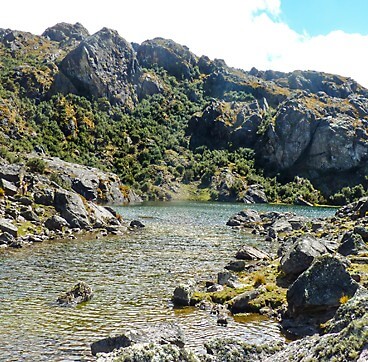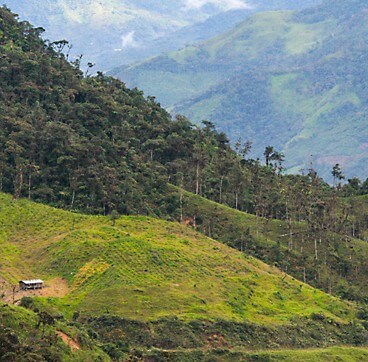ABC and our partners have planted more than 6.8 million trees and shrubs in 15 countries, including more than two million in the Vilcanota Mountains of Peru alone to help restore bird habitat.
Surprisingly few native tree species are commercially available compared to exotic trees. We work with partners to establish nurseries to produce native trees and shrubs for restoration work within our reserves and among surrounding landowners. For example, trees for our Cerulean Warbler Conservation Corridor were grown in nearby ABC-supported reserves.
Restoring lands is one strategy to counter habitat loss and is particularly useful within recently established reserves that may contain portions of degraded land. Planting trees is one of the most powerful tools we have to engage private landowners in large-scale restoration.
Tree planting has multiple benefits: It creates productive habitat for biodiversity, strengthens relations among our partners and local communities, helps safeguard watersheds, and sequesters carbon to mitigate climate change.

In the Vilcanota Reserve Network of southern Peru, we supported an amazing milestone in 2015: more than one million trees planted for habitat restoration and for fuelwood plantations, benefiting birds like Royal Cinclodes. In 2021, this project surpassed two million trees planted. This is the highest number of trees planted at any single ABC-supported project. It’s also a great example of our work with communities.

In 2014, we continued support of forest restoration of degraded parcels of vital bird habitat at Tapichalaca Reserve in Ecuador, with 20,000 native trees planted on 61 acres to benefit resident birds like Jocotoco Antpitta and migrants including Swainson’s Thrush.

We assisted our Colombian partner, Fundación ProAves, with the planting of more than 500,000 seedlings on nearly 3,000 acres of land over a ten-year period. The result, announced in 2015, was a conservation corridor connecting two protected areas and providing habitat for migratory birds like Cerulean Warbler (shown) as well as year-round residents like Gorgeted Wood-Quail.

In an important Nicaraguan coffee-growing region, landowners who received project support, resources, and technical assistance from ABC partner El Jaguar planted more than 12,000 native trees in a region important to Golden-winged Warbler, Wood Thrush, and other migrants. Read more about bird-friendly coffee.